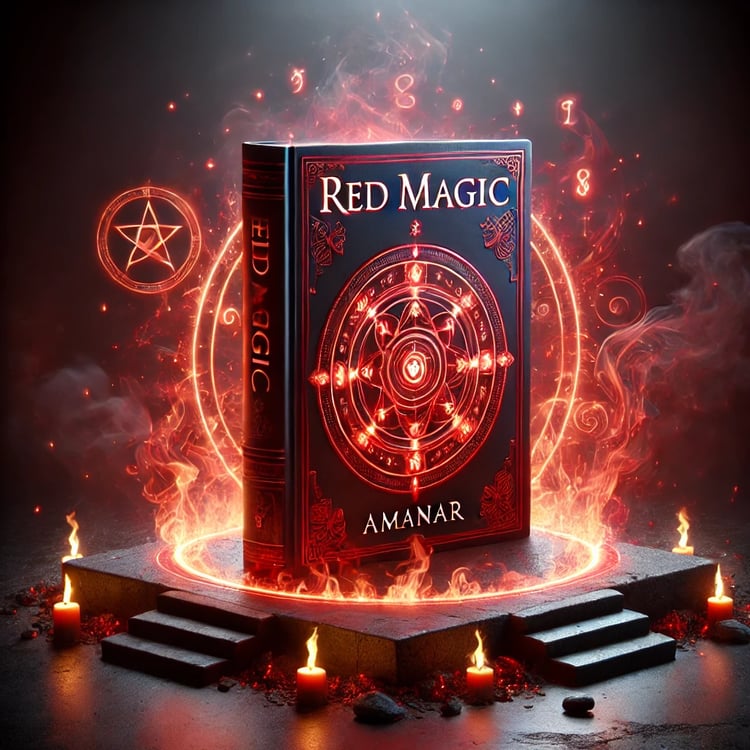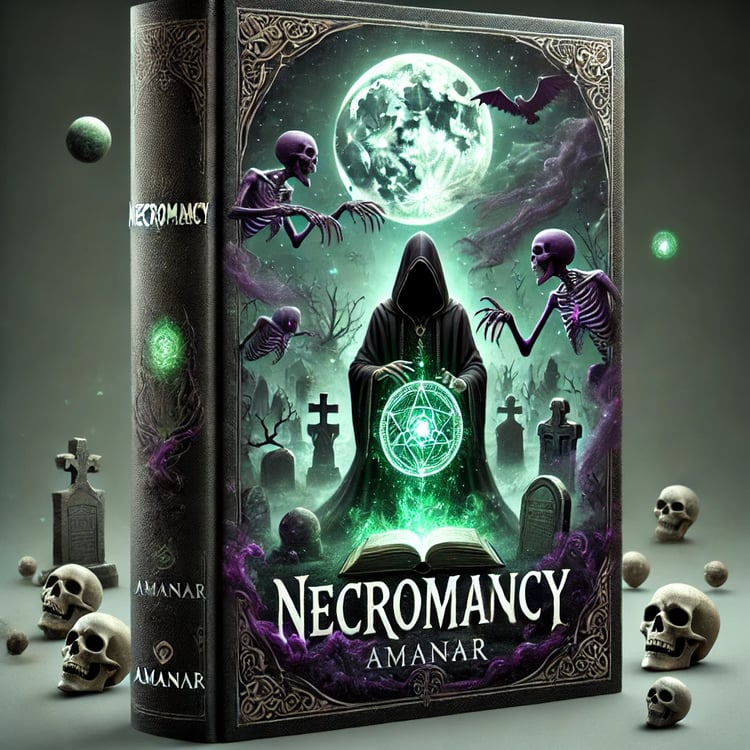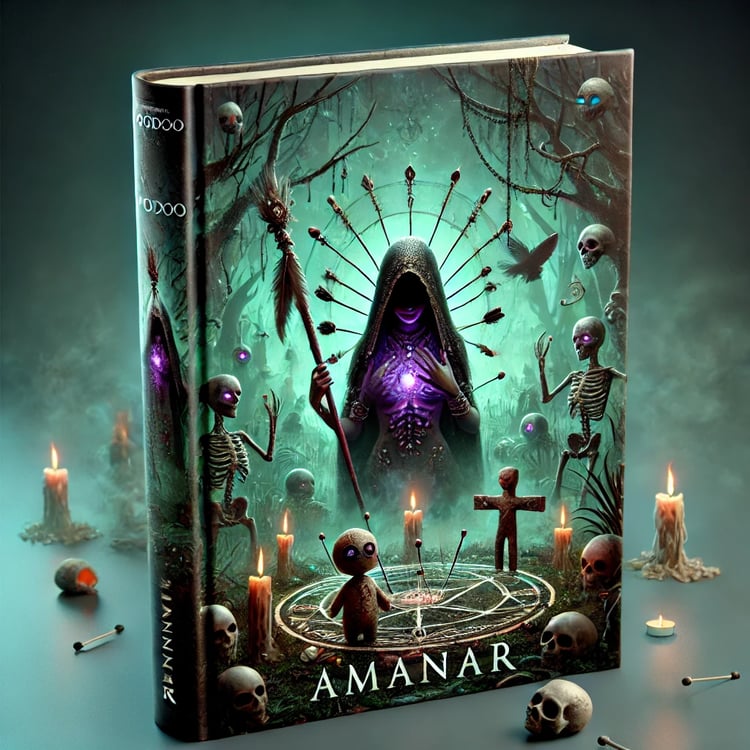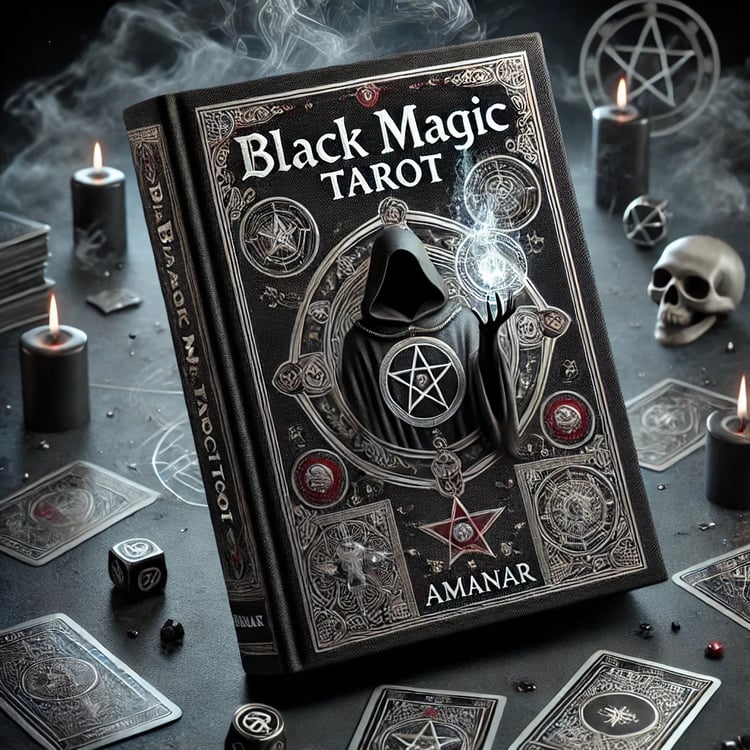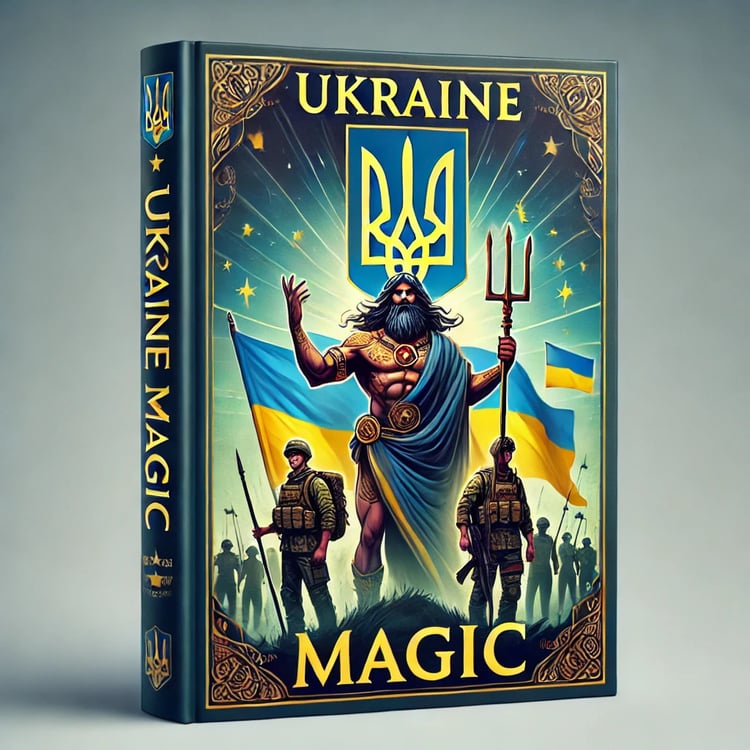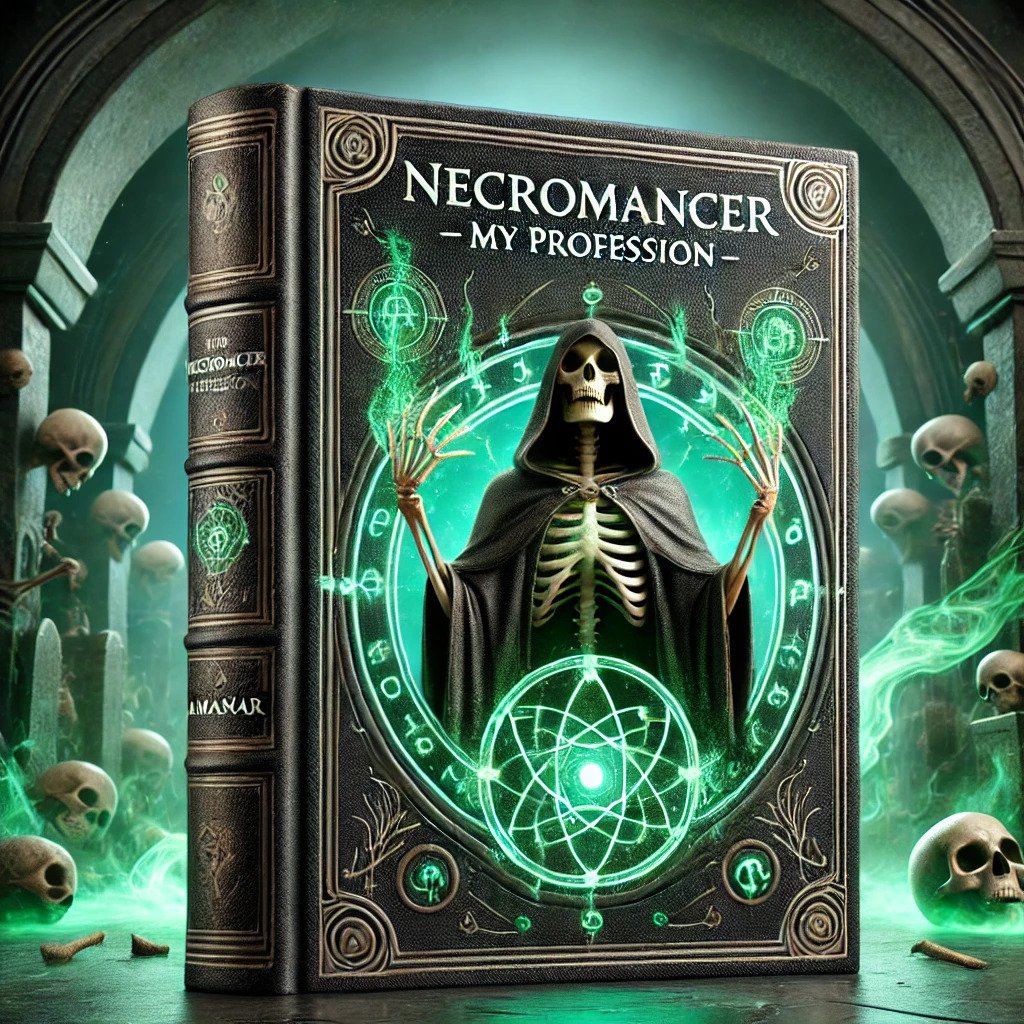
Amanar "Necromancer – My Profession"
Chapter 1. The Whisper of Forgotten Graves
In this inaugural gathering of shadows, the reader shall be guided through the faint echoes of the underworld, revealing the subtle vibrations that drift between the living and the departed. The ancient languages of Latin and Sumerian find their place here, murmured like phantasms in ritual incantations meant to open one’s inner ear to the call of wandering spirits. The chapter draws upon European witchcraft and early medieval grimoires to illustrate how a Necromancer’s craft requires both an unwavering respect for ancestral forces and a willingness to step beyond mortal boundaries. The theories conveyed are woven with practical knowledge of how to sense, interpret, and ultimately harness the ethereal hush of bone-littered catacombs, so that each seeker may learn to enter the threshold of the unknown without fear.
Chapter 2. The Circles of Night and Bone
Through the weaving of chalk and dust, this part of the tome illuminates the purpose and power of protective circles and ritual diagrams used in Western ceremonial magic. The reader shall find cryptic references to forbidden Kabbalistic lore, as well as Celtic and Teutonic influences hidden in the geometry of pentagrams and hexagrams. In the dim glow of candlelight, one will learn to inscribe and consecrate the circle, preparing body and spirit for the conjuration of the deceased. The text embraces an archaic sense of reverence for the unseen, revealing ways to bind wandering apparitions within the sacred boundary, ensuring that what is called from beyond will not easily stray from the conjurer’s intent.
Chapter 3. Conclave of the Shadowed Moon
Beneath the silent watch of a moonless sky, the rituals of summoning and communion with entities from the other side come to the fore. The chapter draws from voodoo practices—melding African diaspora traditions of ancestral reverence with the Western arcane approach to spirit communication. Shrouded in old European superstition and embalmed with the whispers of the ancient ones, the aspirant Necromancer will learn how the phases of the moon and alignment of the stars can imbue each ceremony with heightened potency. This passage offers instructions for forging a link between mortal breath and the grave’s hush, introducing incantations in archaic tongues said to evoke the wandering dead, guiding them from darkness to the circle’s light.
Chapter 4. The Alchemy of Ethereal Essence
Within these yellowed pages, an older art of transmutation arises, not in the metallic sense, but in the manipulation of the spirit’s subtle matter. Here the text delves into the elusive boundary that separates physical remains from the spectral core, illuminating a path that merges Kabbalistic wisdom with archaic European pharmacopeia. Through oils, herbs, and powdered relics, each adept is shown how to distill the essence of life from the debris of mortality. This knowledge is steeped in the whispers of the Sumerian pantheon and carried on the breath of half-forgotten potions, requiring a careful balance between reverence and daring. The reader is warned that the veil between world and underworld is perilously thin when harnessing this arcane technique, thus demanding strict adherence to each step of the process.
Chapter 5. Chant of the Abyssal Tongues
Here the student encounters the potent force of the spoken word, scrawled in alphabets lost to time. Drawing upon the incantatory traditions of Latin prayers mingled with the guttural resonance of Sumerian pleas, the chapter unravels how syllables carry the power to reshape worlds. The text references the knowledge of old monasteries where scribes carefully copied heretical grimoires, preserving secrets that reweave reality through breath and sound. Lessons are offered in chanting with conviction, learning the hidden vibrations that rend the veil and beckon forth ephemeral shadows. In this ancient tradition, the voice of the Necromancer becomes a key, unlocking cryptic doorways sealed in crypts of bone and starlight.
Chapter 6. Candlelit Gateways and Smoke-Drawn Paths
Dim flickers of light offer more than mere illumination. This portion of the text dwells upon the significance of candle magic, essential for any who dare to guide wandering souls from beyond. Ancient formulas detail how the color, scent, and arrangement of candles channel forces both cosmic and chthonic. Smoke becomes a vessel, carrying intent into the realm of spirits, while lingering essences in the flame sing to those who dwell in eternal midnight. The reader will find references to Old World covens who perfected the art of harnessing candlelit gateways, focusing the will upon whispered petitions for knowledge, power, and safe passage through labyrinths of the restless dead.
Chapter 7. Summoning the Blackwind Messenger
At certain crossroads where dusk lingers longest, there exists an invisible current—called the Blackwind—known to herald apparitions and omens of what is yet to unfold. This chapter reveals the ancestral wisdom of Romani travelers and secret societies of Europe who recognized the swirling presence of the Blackwind as both guide and guardian. Wrapped in the language of half-forgotten incantations, these rites instruct the Necromancer on calling the winds of omen to one’s side, coaxing them through offerings of salt, bone, and iron. Once the wind is bound to the conjurer’s will, it becomes a whispering messenger that bridges far-reaching realms of the living and the dead, carrying tidings of what lurks in the silence.
Chapter 8. Veils of the Dreaming Dead
In the quiet darkness of the human mind, dreaming souls may inadvertently brush against the territory of the deceased. This section explores the nocturnal realm, where slumbering consciousness becomes a portal, allowing the adept to travel roads few dare tread. Drawing upon esoteric practices from ancient Greek necromancy and medieval European dream-lore, the chapter offers methods of dream incubation and symbolic interpretation. Sealed with murmured words of binding in archaic tongues, these exercises lead the intrepid seeker through labyrinthine vistas where faces of ghosts and wraiths appear, imparting revelations and warnings that transcend mortal comprehension.
Chapter 9. The Black Mirror of Reflection
Legends tell of oracles and sorcerers who gazed into pools of midnight, peering through time and uncovering secrets best left hidden. Here the tradition of the scrying mirror is resurrected, offering ways to darken glass or obsidian until it resembles the silent emptiness of the grave. Drawing from the known arts of Western ceremonial magic and the whispering traditions of hoodoo, this chapter provides a guide to preparing a black mirror, consecrating it with oils and incantations, and learning to read the swirling images that rise from its depths. Traces of half-heard words in Latin, steeped in the resonance of the necromantic craft, swirl about these pages, offering glimpses of how the mirror becomes a living doorway to past, future, and beyond.
Chapter 10. The Unbound Specter and Its Chains
When spirits are summoned without proper vigilance, they may roam freely, bringing terror and mischief to the conjurer and the unwary. This chapter recounts cautionary tales of unbound specters from European folklore and Haitian voodoo legends, revealing the dire importance of ritual binding. The text delves into the crafting of fetters, ranging from iron talismans to runic wards burned into ash wood. Under the guidance of ancient incantations that echo in shadowy cathedrals, the adept learns how to tether a spirit, ensuring that the ephemeral one remains captive, willing to reveal its forbidden knowledge without devolving into chaos. Amid these pages, one finds whispers of necromantic vow, forging a deep covenant between summoner and summoned.
Chapter 11. Banquets for the Famished Dead
Not all spirits come willingly. Some hunger for the warmth and essence of the living, while others yearn only for memories of mortal sensation. In this section, ancient rites of offering and appeasement surface, borrowing from the heartfelt ceremonies of old Slavic necromancers, African spirit feasts, and hidden enclaves of European mediums. The text details the preparations of cursed breads, blood wine, and symbolic tokens designed to satisfy the yearning of the restless departed. Through arcane recitations in archaic tongues, the conjurer learns to set a table for ghosts, luring them into peaceful communion where their secrets can be extracted amidst candlelit murmurs and silent tears.
Chapter 12. The Invocation of Guardian Ghouls
Beyond the pale threshold, one may encounter entities that protect forgotten tombs and cryptic knowledge. These Guardian Ghouls, spoken of in silent breath by medieval monks and desert hermits alike, can be conjured to ward off malevolent forces. Embracing the fusion of ancient Sumerian belief with the grim artistry of European necromancy, this portion of the grimoire teaches how to craft sigils of guardianship, sealed with a drop of mortal blood and an echo of one’s true name. Striking pacts with these watchers requires humility and cunning, for though they stand as allies to the adept, they remain denizens of the grave, ever watchful for a slip in the conjurer’s strength.
Chapter 13. Eclipses of Life and Death
Cosmic alignments, be they solar or lunar, have long been known to create fissures in the walls between realms. This chapter casts its gaze to the skies, unveiling the potent synergy of celestial events with necromantic undertakings. Drawing on the records of ancient astrologers, whose manuscripts were condemned and burned, the text reveals how the Necromancer’s art gains additional force during eclipses. The swirling darkness that blots out the sun or moon becomes a liminal gate through which one might call forth spirits long dormant, gleaning from them echoes of power and truth. Within these paragraphs, incantations in both Latin and the tongues of old Babylon are whispered, guiding the adept on how best to harness the fleeting shadow of an eclipse for necromantic ascendancy.
Chapter 14. The Blood Oath and the Silver Knife
In the realm of necromancy, blood is a conduit of life force, a potent offering that binds conjurer and conjured in a compact forged with iron will. Here the text ventures into the significance of blood rites, carefully describing how a single drop can tilt the balance between mortality and the spirits beyond. The stories of ancient Celtic rites meld with the hidden knowledge of clandestine European orders, teaching how the slash of a silver blade and the recitation of secret words can seal an oath in scarlet. The chapter warns, however, that each oath demands payment, and the conjurer must weigh the price of forging such a link with spirits who yearn to taste the fleeting essence of life.
Chapter 15. The Codex of Forbidden Names
For those daring to control mightier specters, knowledge of their hidden, secret names becomes paramount. In hushed libraries and crumbling towers, scribes once compiled the Codex of Forbidden Names, a catalog of words steeped in occult significance. This portion of the book discusses how the adept might glean these names through rigorous study of dead languages, cryptic runes, and deciphered cuneiform tablets. By weaving these names into an incantation, the Necromancer acquires leverage over the wandering souls of kings, warriors, and witches long since turned to dust. Each name resonates with the thunder of its own history, so the conjurer must handle this knowledge with caution, for unearthing such power can awaken resentful spirits best left forgotten.
Chapter 16. Purification by Graveyard Soil
Not all aspects of necromancy focus on conjuring the departed. This chapter delves into the cleansing and protective properties of soils gathered from sacred burial mounds and hallowed graveyards. Drawing on folk belief from rural Europe, where earth is said to carry both memory and blessing, the text instructs the adept in the proper harvest and consecration of this potent substance. Ritual baths and anointings with graveyard soil, accompanied by softly chanted supplications, can purify the magician’s aura while fortifying the spirit against malevolent forces. The words inscribed here remind the reader that the boundary between life and death is neither wholly dark nor entirely light, and that even the dust of the grave can serve as a sacred remedy for spiritual affliction.
Chapter 17. Voices in the Bone-Flute
Where the breath of the living meets the remnants of the dead, music can serve as a binding force that unites realms. This chapter unveils the half-legendary craft of fashioning flutes and wind instruments from the bones of the deceased, believed to carry the resonance of their lingering souls. Recounting the traditions of nomadic sorcerers who wandered Europe and the East, the text teaches how to carve, clean, and bless these instruments. When played, the haunting melodies are said to lure lost spirits, drawing them closer to the conjurer’s circle. Layered into these pages are archaic Latin chants that may amplify the flute’s power, ensuring that the music echoes across the veil, offering the living a fleeting glimpse of the beyond.
Chapter 18. The Pact of the Ebon Grimoire
Occasionally, a Necromancer must pledge allegiance to a deeper current of power, binding one’s essence to the domain of ghosts and wraiths. Within these paragraphs, the ancient tradition of signing one’s name in the ebon book is described in vivid detail. Originating from clandestine fraternities rumored to dwell in the catacombs beneath old cathedrals, the ebon grimoire itself is said to carry the echo of every vow taken in its presence. Thus, the conjurer becomes aligned with the swirling energies of countless spirits, forging a pact that amplifies one’s gifts while tethering the soul ever tighter to the land of the dead. The text cautions that each vow extracts a toll, reminding the reader that any bargain struck with otherworldly forces must be examined with unwavering clarity.
Chapter 19. Warding the Weeping Shade
Some spirits embody sorrow so profound that it seeps into every living breath around them. In this chapter, the reader learns to recognize and defend against these weeping shades, spectral remnants of those who died in despair. Borrowing from medieval demonology and the whispered knowledge of desert ascetics, the text outlines a variety of warding techniques including candlelit altars, sacred inscriptions in Latin or older scripts, and the symbolic sprinkling of salt mixed with consecrated oils. Through invocation of the Archangels in Kabbalistic tradition or appeals to ancient earth deities, the Necromancer gains the fortitude to stand unshaken by the lamentations of the sorrowful dead.
Chapter 20. Conjuring the Tribunal of Ancients
At the pinnacle of a Necromancer’s craft comes the audacious act of calling forth a council of venerable, long-departed sages. This daunting ritual, recounted in the cryptic manuscripts of Renaissance occultists, involves the precise alignment of planetary hours, the resonance of chanting in forgotten tongues, and the offering of rare incense gleaned from far-flung corners of the earth. Here, the adept stands before the Tribunal of Ancients, an assembly of spirits who guard the secret histories of humanity. They may grant revelations beyond mortal comprehension, but only if approached with humility and unblemished devotion. Failure to maintain the delicate equilibrium of respect can result in the tribunal’s wrath, condemning the conjurer to an otherworldly fate.
Chapter 21. Resurrecting the Echo of Memory
While necromancy often conjures images of vile grave-robbing and restless ghosts, it can also serve a gentler purpose: the retrieval of lost knowledge and precious recollections. This chapter delves into the practice of calling forth echoes of memory from the deceased, allowing their wisdom to once again grace the realm of the living. Through a tempered blend of incantations and carefully measured offerings, the conjurer taps into a spirit’s recollections without binding its soul to servitude. The text references centuries-old accounts of mediums who soothed entire villages by restoring cherished ancestral voices, underscoring that necromancy, in its purest form, can bridge the gap between grief and understanding.
Chapter 22. The Final Rite of the Waning Candle
Concluding this eldritch manual, the last chapter outlines a culminating ceremony meant to close the path that winds between life and death. By letting a single candle burn to its final flicker in a place sacred to the necromantic craft, the practitioner symbolizes the delicate line forever walked by those who traffic in shadows. Within this hush, lingering spirits are released, and the Necromancer stands at a crossroads of fate, reflecting upon the knowledge gleaned and the power attained. The text concludes with a soft admonition, reminding the reader that every incantation, every whisper of bone and ash, brings with it a solemn responsibility to honor the balance that sustains all realms. Thus, the final waxen tear drips in darkness, sealing the gate as the book of shadows closes upon its secrets.
Amanar

